Elector Segregation is a powerful feature that allows election organizers to generate voting results that exclude specific electors from the final count. When this feature is activated, final results will only include votes cast by unsegregated electors.
Depending on your specific account configuration, different terms may be used to describe the same feature:
- Segregate and Unsegregate
- Challenge and Unchallenge
- Mark as Audit and Unmark as Audit
However, feature functionality remains the same regardless of the terminology being used on your account.
Segregating or Unsegregating an Elector
As long as the election results haven't been tallied, you will find a segregate / unsegregate button next to each elector in the Action column of the Electors page.
To segregate or unsegregate an elector, click on the corresponding button in the Action column and confirm your intention in the pop-up window that appears.
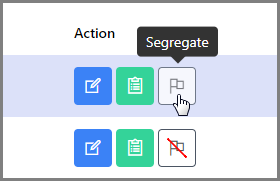
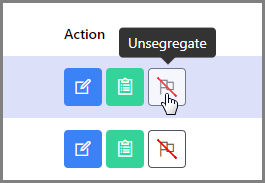
A green Success message confirms that the elector has been updated, and the Segregated column is updated accordingly with a green checkmark if the elector is segregated, or a blank if the elector is unsegregated.
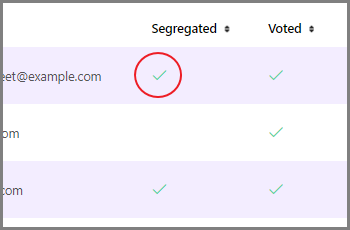
Furthermore, each time an elector is segregated or unsegregated, the Election Log is updated accordingly.


Importing Segregated Electors via CSV file
Unless indicated otherwise, new electors are always imported as unsegregated. To import a list that contains segregated electors, your CSV file must include a column indicating each elector's Segregated status.
Electors will be imported as segregated if the value provided in the Segregated column is one of the following: Y, Yes, 1, True, O, Oui (Note: these values are case-sensitive).
All other values, such as N, No, 0, False, Non, or blank fields, will be imported as unsegregated electors.
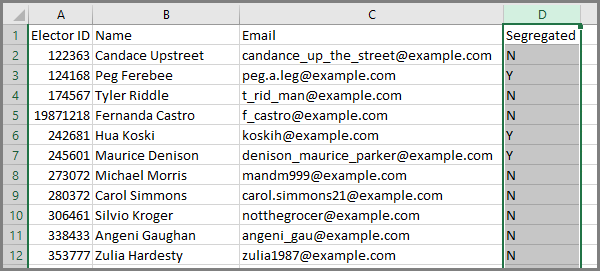
In the above example, segregated electors are indicated with the letter "Y" in the Segregated column.
When importing an Electors CSV file in the Voting System, you may assign this column to the Segregated field from the dropdown menu below:
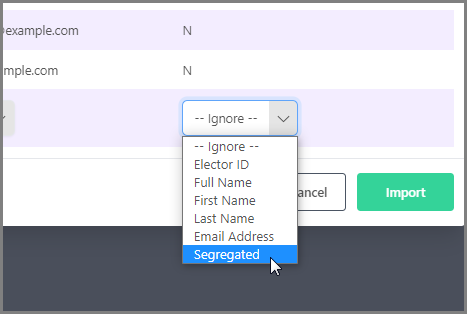
Checking Reports and Reviewing Segregated Elector Turnout
When Elector Segregation is enabled, the Election Overview page displays the total number of eligible electors including any that are segregated, as shown below. Likewise, the total number of votes cast also includes segregated votes at any given moment.
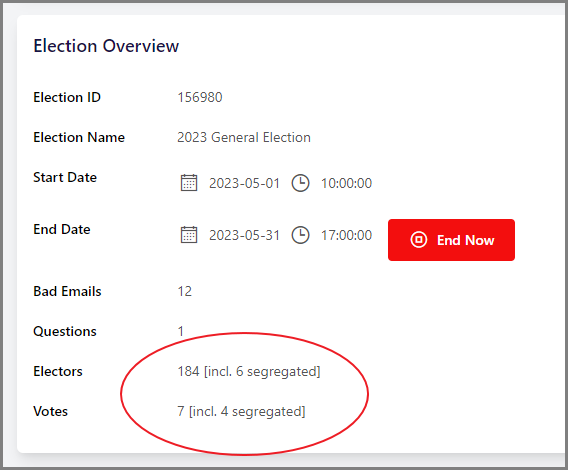
Turnout figures and reports from the Reports page always include both segregated and unsegregated electors.
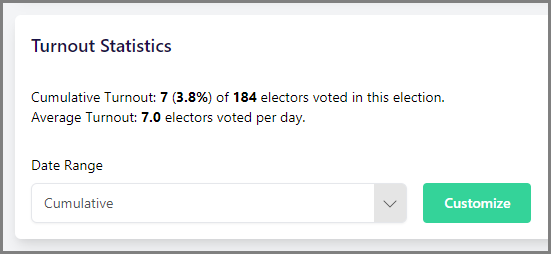
The Electors CSV, which can be downloaded at the bottom of the Electors page, also includes both segregated and unsegregated electors. Each elector's current Segregated status is indicated in the Segregated column by the letters Y and N (for "Yes" and "No", respectively).
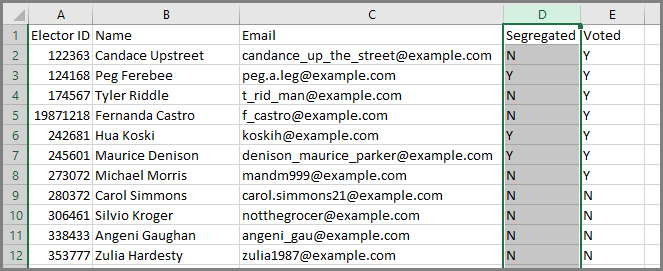
Checking and Interpreting Segregated Results
Depending on your specific account configuration, you may need to unlock results to trigger a vote count. Ensure that any segregated or unsegregated electors are correctly identified as such on the Electors page before unlocking results, as you will no longer be able to update their Segregated status once results are unlocked.
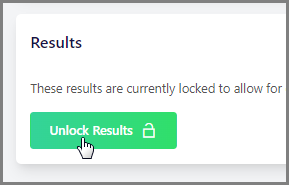
To unlock results, simply click on the green Unlock Results button on the Results page.
When Elector Segregation is active and there are segregated electors, election Results only include unsegregated electors and segregated electors are ignored.
Segregated electors are also excluded from the Raw Results CSV and any Segmented Results report that may be available.
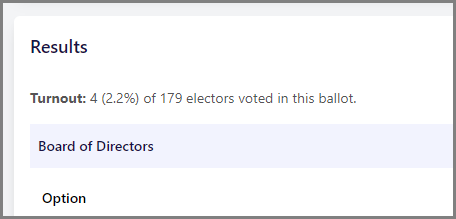
For example, in the Board of Directors election above, a total of seven (7) electors voted but three (3) were segregated. Therefore, the results only show votes cast by the four (4) unsegregated electors.
Segregated electors remain in the electors list even after results are unlocked. They are indicated by a Y in the Segregated column of the Electors CSV.
Unsegregating Electors After Results Have Been Unlocked
In the event that segregated votes need to be counted at a later date, Simply Voting staff can lock the results again upon request. This will allow you to unsegregate electors and generate the results once more. The new results will replace the previous results.